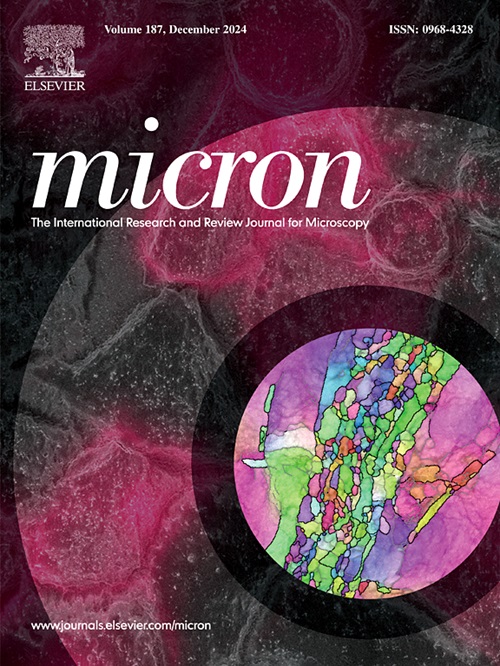Development of an accurate simplified approach for data processing in AFM indentation experiments
IF 2.2
3区 工程技术
Q1 MICROSCOPY
引用次数: 0
Abstract
Atomic Force Microscopy (AFM) nanoindentation is the most effective method for determining the mechanical properties of soft biological materials and biomaterials at the nanoscale, with significant applications in many areas, including cancer diagnosis. However, a major drawback of this method is the complexity of the experimental procedure and data processing, which requires several calibration steps.To avoid this complexity, the AFM tip is usually approximated as a perfect cone. In this case, , where F is the applied force, ℎ is the indentation depth, and is a constant that depends on both the cone’s half-angle and the material's properties. However, since AFM tips are pyramidal with a rounded tip apex (or similar to a truncated cone in some cases), the conical approximation may lead to non-negligible errors. Although equations exist that relate the applied force, indentation depth, and the sample’s Young’s modulus for real indenters, they are rarely used because they do not directly relate the applied force to the indentation depth (i.e., the fitting process is much more complicated compared to the conical approximation). In this paper, a new, accurate, simplified approach for data processing is proposed, based on fitting the force–indentation data to a quadratic equation of the form: . It is proven that the parameter is independent of the tip apex properties. On the other hand, the parameter depends on the material properties, the cone’s half angle, and the shape and dimensions of the tip apex. Simulated force-indentation data from sphero-conical and blunted pyramidal indenters, along with real experimental data from lung tissues, are processed using the proposed approach. The key result is that Young’s modulus can be accurately determined using only the parameter; therefore, tip characterization can be avoided.
AFM压痕实验中数据处理的精确简化方法的发展。
原子力显微镜(AFM)纳米压痕是在纳米尺度上测定软质生物材料和生物材料力学性能的最有效方法,在包括癌症诊断在内的许多领域都有重要的应用。然而,这种方法的一个主要缺点是实验程序和数据处理的复杂性,这需要几个校准步骤。为了避免这种复杂性,AFM尖端通常近似为一个完美的锥体。在这种情况下,F=ch2,其中F是施加的力,F是压痕深度,c是一个常数,它取决于锥体的半角和材料的性质。然而,由于AFM尖端是锥形的,尖端是圆形的(或者在某些情况下类似于截锥形),锥形近似可能导致不可忽略的误差。虽然存在与实际压痕的施加力、压痕深度和样品的杨氏模量有关的方程,但它们很少被使用,因为它们不直接将施加力与压痕深度联系起来(即,与圆锥近似相比,拟合过程要复杂得多)。本文提出了一种新的、精确的、简化的数据处理方法,该方法将力压痕数据拟合为F=c2h2+c1h形式的二次方程。证明了参数c2与尖端特性无关。另一方面,参数c1取决于材料特性、锥体的半角以及尖端的形状和尺寸。利用所提出的方法对球锥压头和钝锥体压头的模拟力压痕数据以及肺组织的真实实验数据进行了处理。关键的结果是杨氏模量可以只用c2参数精确地确定;因此,可以避免尖端表征。
本文章由计算机程序翻译,如有差异,请以英文原文为准。
求助全文
约1分钟内获得全文
求助全文
来源期刊

Micron
工程技术-显微镜技术
CiteScore
4.30
自引率
4.20%
发文量
100
审稿时长
31 days
期刊介绍:
Micron is an interdisciplinary forum for all work that involves new applications of microscopy or where advanced microscopy plays a central role. The journal will publish on the design, methods, application, practice or theory of microscopy and microanalysis, including reports on optical, electron-beam, X-ray microtomography, and scanning-probe systems. It also aims at the regular publication of review papers, short communications, as well as thematic issues on contemporary developments in microscopy and microanalysis. The journal embraces original research in which microscopy has contributed significantly to knowledge in biology, life science, nanoscience and nanotechnology, materials science and engineering.
 求助内容:
求助内容: 应助结果提醒方式:
应助结果提醒方式:


